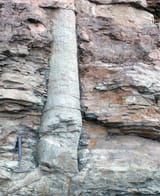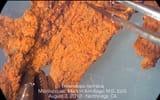>>718313919
1/2
It looks like you’re relying heavily on Answers in Genesis, which presents arguments already addressed in mainstream geology, physics, and biology. Let me go through your points:
1. "No recorded history before 3rd millennium BC"
Written records go back to c. 3200 BC (Sumerians), yes. But archaeology and paleontology deal with prehistory. Recorded history ≠ all evidence of the past.
2. "Radiometric dating is pseudoscience"
It’s not. Radiometric dating is grounded in well-tested nuclear physics. Different isotope systems (U-Pb, K-Ar, Rb-Sr, C-14, etc.) often converge on the same ages. The claim about “rocks of known age giving wrong results” usually comes from misapplied methods (e.g. dating volcanic rocks with isotopes not suited for young samples). In general, when the method is correctly applied, it’s consistent and independently confirmed (e.g. by tree rings, ice cores, lake varves).
Claims of a young Earth:
Sediment on seafloor – Sediment is recycled via plate tectonics and subduction, so you wouldn’t expect all 4.5 billion years’ worth to just pile up.
Bent rock layers – Rocks can bend plastically under high heat and pressure deep underground. That’s why metamorphic folds exist without shattering.
Soft tissue in fossils – What’s found is degraded organic remnants bound to iron and minerals, not fresh, squishy tissue. Chemistry shows it can persist under special conditions.
Faint sun paradox – This is solved: early Earth had higher greenhouse gases (CO2, CH4), which kept it warm despite a dimmer sun.
Magnetic field decay – Earth’s field fluctuates, reverses, and regenerates via the geodynamo. It’s not a one-way decay. Paleomagnetic data show a field billions of years old.
Helium in zircon – Diffusion rates depend on temperature and crystal structure. The “too much helium” claim comes from a creationist paper with flawed assumptions.























